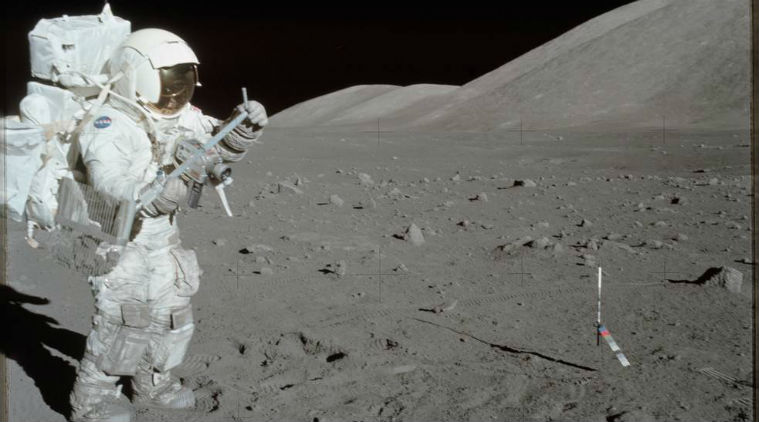
NASA has awarded $8 million to nine science teams to study the untouched samples collected from the Moon by Apollo missions in the 1970s and carefully stored for nearly 50 years, the US space agency said.
“By studying these precious lunar samples for the first time, a new generation of scientists will help advance our understanding of our lunar neighbour and prepare for the next era of exploration of the Moon and beyond,” said Thomas Zurbuchen, Associate Administrator for NASA’s Science Mission Directorate here.
“This exploration will bring with it new and unique samples into the best labs right here on Earth,” Zurbuchen said in a statement.
Six of the nine teams will look at one of the three remaining lunar samples, from Apollo missions 15, 16, and 17, which have never been exposed to Earth’s atmosphere, NASA said.
The particular sample these teams will study came to Earth vacuum-sealed on the Moon by the Apollo 17 astronauts Harrison Schmitt and Gene Cernan in 1972.
The Apollo 17 sample comprises about 800 grammes of material, still encased in a “drive tube” that was pounded into the lunar regolith to collect a core of material.
That core preserves not just the rocks themselves but also the stratigraphy from below the surface so today’s scientists can, in a laboratory, study the rock layers exactly as they existed on the Moon.
The core has been carefully stored at NASA’s Johnson Space Center in Houston since December 1972.
Other teams will be studying samples that have also been specially curated, some from Apollo 17 that were brought to Earth and then kept frozen, and samples from the Apollo 15 mission which have been stored in helium since 1971.
Also read | NASA orbiter spots water molecules moving around the dayside of Moon
NASA has only collected samples from a few places on the Moon so far, but the US space agency knows from the remote sensing data that the Moon is a complex geologic body.
From orbit, the agency has identified types of rocks and minerals that are not present in the Apollo sample collection.